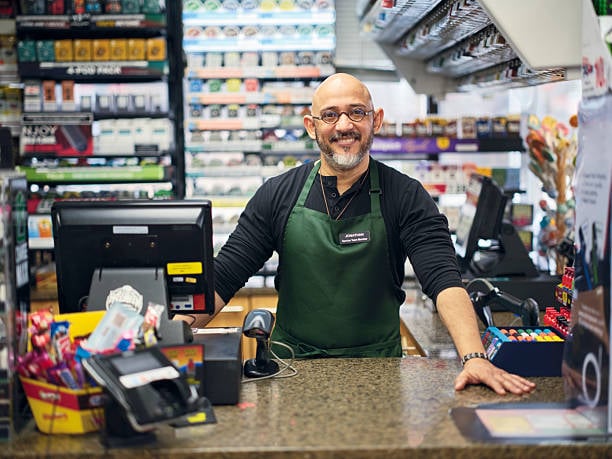
Grocery is one of the most operationally complex retail sectors in the world. Every location must balance freshness, safety, sustainability, and customer experience under constant cost pressure. Facilities leaders sit at the heart of that equation.
In 2024, U.S. grocery sales reached $848 billion, according to FMI–The Food Industry Association, and are projected to grow another 5.6 percent by 2026 as consumers demand more fresh, ready-to-eat, and locally sourced products. Yet with that growth comes rising maintenance demands. Equipment downtime, temperature variance, or poor lighting no longer just affect operations. They influence brand trust, compliance, and customer retention.
Grocery facilities are no longer back-of-house infrastructure. They are an extension of the brand promise itself.
1. The New Standard: Reliability Equals Freshness
In grocery, the facility is the brand. Customers judge freshness with their eyes, and that judgment starts with the environment.
Research by Deloitte found that 72 percent of shoppers associate a store’s physical condition with product quality, while 65 percent say cleanliness and lighting affect whether they would buy fresh food from that store. A flickering light over the produce section or a malfunctioning cooler is not just a maintenance issue. It is a silent signal that the store is slipping.
Facilities leaders who link maintenance reliability with customer trust are reframing their value to the business. Freshness, safety, and cleanliness are all outcomes of operational excellence.
2. The Cost Pressure Paradox
Grocers operate on razor-thin margins that average 1 to 3 percent, according to McKinsey. At the same time, maintenance and energy costs have increased by over 15 percent since 2021, and repair costs by 17.3 percent between 2022 and 2024, based on FMI and Bureau of Labor Statistics data.
Many grocers have focused on reducing labor or inventory costs, but often overlook the hidden inflation inside facilities. Deferred maintenance, inconsistent vendor performance, and inefficient energy use quietly erode profitability.
Consider refrigeration. Supermarket refrigeration alone accounts for up to 40 percent of total store energy use, according to the U.S. Department of Energy. Poorly maintained systems can waste 10 to 20 percent more energy, while also risking product loss from temperature excursions.
Every hour of downtime in refrigeration carries a double cost: lost product and lost customer confidence.
3. From Reactive to Predictive: The Data Shift
Leading grocery chains are increasingly turning to data-driven maintenance strategies. Instead of reacting to equipment failures, they are using analytics to predict and prevent them.
According to the Retail Industry Leaders Association, grocers using predictive analytics in their maintenance programs see up to 30 percent fewer unplanned repairs and 25 percent lower total maintenance spend over time. The key is integrating three data layers:
-
Asset performance data (run hours, age, repair frequency)
-
Vendor performance data (response time, first-time fix rate, cost variance)
-
Environmental data (temperature, humidity, energy draw)
By combining these insights, grocery facilities teams can anticipate when assets are likely to fail, plan maintenance during off-hours, and reduce food waste caused by unplanned outages.
The future of grocery facilities management is less about repair and more about foresight.
4. Sustainability and Facilities Are Now the Same Conversation
Sustainability in grocery is no longer just about packaging or sourcing. It starts with the physical infrastructure.
-
Energy efficiency: The average supermarket spends about $4 per square foot per year on electricity, and refrigeration accounts for nearly half of that. Upgrading to high-efficiency systems, LED lighting, and optimized HVAC scheduling can reduce total energy use by 20 to 30 percent.
-
Food waste prevention: The World Wildlife Fund estimates that 13 percent of all food waste in the U.S. occurs at the retail level, often due to temperature failures and improper storage conditions. Preventive maintenance directly supports sustainability goals by keeping perishable items within safe limits.
-
ESG reporting: Many grocers are now required to report on emissions reductions. Facilities data provides one of the most measurable ways to demonstrate progress.
By aligning maintenance programs with sustainability initiatives, facilities leaders become essential partners in achieving corporate ESG objectives.
5. Building the Modern Grocery Facilities Playbook
A forward-thinking grocery facilities program should include four key components:
1. Preventive maintenance maturity.
Track the ratio of planned to reactive work orders. Industry benchmarks suggest that at least 70 percent of work should be preventive to control costs and ensure uptime.
2. Transparent vendor management.
Use scorecards that track first-time fix rates, average completion time, and compliance by trade. Consistency across vendors builds both quality and cost control.
3. Data visibility.
Integrate facilities, operations, and finance data into a shared dashboard. This allows leadership to see the full cost and impact of every work order on profit and performance.
4. Capital planning discipline.
Use asset lifecycle data to forecast replacement timing and budget accordingly. A well-managed lifecycle plan can reduce emergency capital spend by up to 25 percent, according to FacilitiesNet research.
6. The Strategic Role of the Facilities Director
The grocery Facilities Director of 2025 is no longer just an operations manager. They are a business strategist. Their work intersects with energy management, customer experience, food safety, and brand perception.
They are the ones who ensure the ovens stay hot, the freezers stay cold, and the aisles stay bright — not just for efficiency, but for trust.
When maintenance is reliable, the customer experience feels effortless. When it fails, everyone notices.
Conclusion
In grocery, facilities excellence is customer loyalty in disguise. Every light, temperature gauge, and piece of equipment plays a role in the shopper’s perception of freshness, cleanliness, and care.
For Facilities Directors, the challenge is to elevate maintenance from an operational task to a strategic advantage. Build your data foundation, measure what matters, and align your program with both profit and sustainability goals.
Grocery leaders who master that balance will not only save costs but also strengthen the trust that keeps customers coming back week after week.
Let’s talk.
Get in touch and fill out the contact form below!




